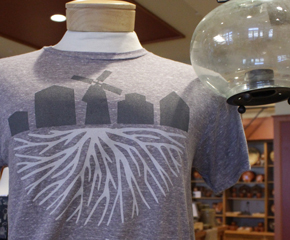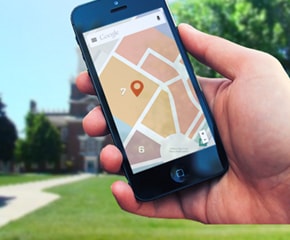
Actions of Innovation
Implement: Launch Your Design
Grades 2-5
Science, English Language Arts, Social Studies
Driving Question
When working through the “Implement” phase of an innovation journey, how can students implement a design to address an uncovered need or problem?Learning Objectives
Students will be able to:- Understand and identify the needs of zoo animals, zookeepers, and guests.
- Design an animal habitat to address the needs of zoo animals, zookeepers, and guests.
- Implement a design by constructing a model of an animal habitat.
Why This Matters
After working through the innovation journey, students are often most excited to arrive at the “Implement” phase. This phase can look different depending on the type of innovation in process—implementing a social innovation process may look different than the launch of a technological innovation. Sometimes, implementation might take the form of an entrepreneurial venture. Remind students that sometimes innovation is having a brand-new idea. Other times it might be looking at the objects, systems and processes around you and wondering how they could be done better. For this activity, students will implement by creating a model of an animal habit to represent the culmination of an innovation journey.Standards
Common Core: CCSS.ELA-LITERACY.SL.3-5.1, CCSS.ELA-LITERACY.SL.3-5.4; NGSS: 3-LS403;C3 Framework: D2.Civ.12.3-5, D2.His.14.3-5, D2.His.16.3-5, D4.3.3-5.
Prep Activities
Students will view The Henry Ford’s image of a historic bear enclosure from Lincoln Park Zoo 1901 and more modern images of animal habits. They will discuss the features of the habitat and what needs are being met for the animal, zookeepers, and guests.
Core Activities
Formative Performance Task:
Students will identify a specific zoo animal and design their own habitat to meet the needs of the animal. Students will research this animal (Uncover) to identify (Define) important features/ needs that should be included in the habitat (Design). Students will receive peer and teacher feedback on their design (Optimize) and then build or draw a model (Implement).If teachers prefer to save time, they could provide the animal and research for the students. Alternatively, the habitat could be designed for a school or classroom pet.
Post Activity
Students will present their model, explaining how their design best represents the major needs of the animals, zookeepers and guests.Model i
Throughout this lesson, there will be opportunities to practice and develop Model I’s Habits of an Innovator and Actions of Innovation. Listed below are the Habits and Actions that students will be developing and practicing.Developing Habits of an Innovator
-
Stay Curious
Students will choose to explore and research the needs of an animal, the zookeepers, and guests in a zoo habitat. - Collaborate
Students will work together to design and build a model of an animal habitat. - Challenge the Rules
Students will challenge the rules as they discover new ways to design an animal habitat. - Be Empathetic
Students will gain understanding of the needs of an animal, zookeeper and guests and use these perspectives to design a habitat.
Practicing Actions of Innovation
- Design
Students will design a model of an animal habitat to best meet the needs of an animal, zookeepers, and guests. - Implement
Students will make improvements to their design and build a model of their animal habitat.
Prep Activities
Explain to students that since the late 1800s zoos have been educational places for people to see and learn about animals. But zoos didn’t always take the needs of animals or the safety of zookeepers and guests into account.As a class, look at The Henry Ford image “Bear Pit, Lincoln Park Zoo, Chicago Illinois, 1901.”
Ask students the following questions: (These answers can be best guesses/brainstorming or students can do research)
- What do you think bears need to live in a zoo?
- What do you think the guests who visit the zoo need?
- What aspects or features of the habit do you think help provide for the needs of the bears, zookeepers, and guests?
- Do any aspect or features seem harmful or opposite of the need?
Core Activities
Formative Performance Task:
Students should work collaboratively in small groups. Ask students to identify a specific animal for which to design a zoo habitat. If time is limited, teachers can also assign a specific animal to groups and provide research. Or students may design a habitat for a school/classroom pet.They can brainstorm ideas and draw rough sketches of their ideas. Remind students that no idea is a bad idea. Often the most creative ideas can lead to more realistic ideas.
Share out:
Have student groups present their habitats to their peers and teacher. After receiving feedback, groups should optimize or improve their design before the post activity.Design:
Using poster boards and other craft/recyclable materials, students should build a model of their habitat. If time is limited, a 2D drawing with details and descriptions can be created. Allow students to be creative and inventive. Encourage them to use color and unique materials.
As students work through each part of the project, encourage them to reflect on how they are using or might use the Model i Habits and Actions to guide their project building.
Post Activity
Summative Performance Task : Presentation
Finally, students will share their models with the class. They may write a script or use notecards, if needed. Students should highlight the major features of the habitat, specifically highlighting the needs of the animal, zookeepers, and guests that their model meets.Standards
Common Core State Standards In English Language Arts
CCSS.ELA-LITERACY.SL.3-5.1. Engage effectively in a range of collaborative discussions with diverse partners on grade level topics, texts and issues, building on others’ ideas and expressing their own clearly.CCSS.ELA-LITERACY.SL.3-5.4. Report on a topic or text, tell a story, or recount an experience with appropriate facts and relevant descriptive details, speaking clearly at an understandable pace.
Next Generation Science Standards
3-LS3-3. Construct an argument with evidence that in a particular habitat some organisms can survive well, some survive less well, and some cannot survive at all.College, Career and Civic Life (C3) Framework for Social Studies State Standards
D2.Civ.12.3-5. Explain how rules and laws change society and how people change rules and laws.
D2.His.14.3-5. Explain probable causes and effects of events and developments.
D2.His.16.3-5. Use evidence to develop a claim about the past.
D4.3.3-5. Present a summary of arguments and explanations to others outside the classroom using print and oral technologies and digital technologies.


